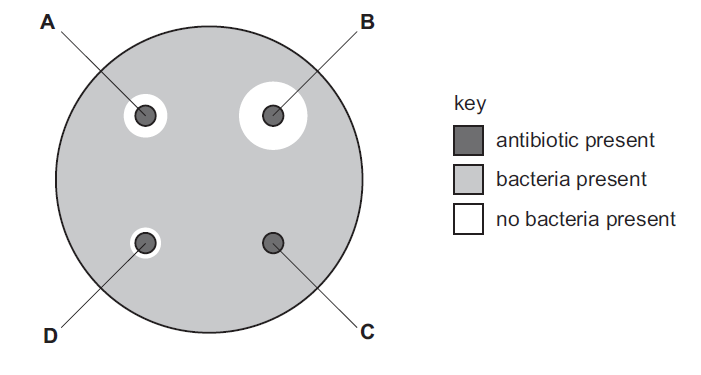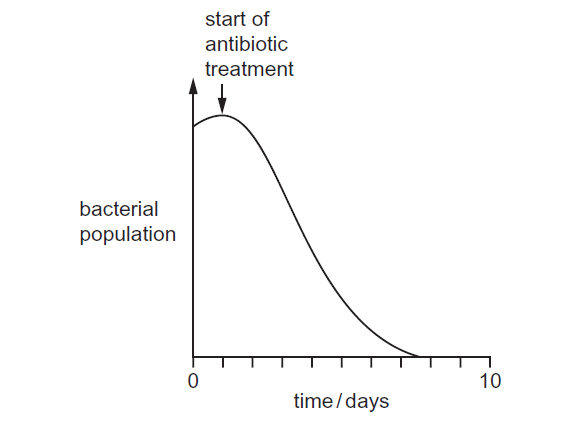Question
Heroin is an illegal drug which has many effects on the body.
Which statement about the effects of heroin abuse is correct?
Heroin decreases reaction times.
Heroin increases negative social behaviour.
Heroin is a stimulant.
Heroin is not addictive.
▶️Answer/Explanation
B
Among the provided options, the correct statement about the effects of heroin abuse is B.
“Heroin increases negative social behavior.”
Heroin is an illegal opioid drug that is highly addictive and has significant negative effects on the body and mind. It is a depressant, not a stimulant, meaning that it slows down central nervous system activity. Heroin abuse can lead to a range of harmful consequences, including impaired cognitive function, decreased reaction times, and a tendency to engage in negative social behaviors due to the drug’s impact on judgment and decision-making. Additionally, heroin is extremely addictive and can lead to physical dependence and severe withdrawal symptoms when someone tries to quit using it.
Question
Which type of drug is used to treat bacterial infection?
A antibody
B antibiotic
C depressant
D vaccine
 Answer/Explanation
Answer/Explanation
B. Antibiotic
Antibiotics are a type of drug used to treat bacterial infections. They work by killing or inhibiting the growth of bacteria, helping the body’s immune system to effectively combat the infection. Antibiotics are commonly prescribed by healthcare professionals to target specific bacterial strains responsible for various infections. It’s important to use antibiotics as directed by a doctor and to complete the full course of treatment to prevent the development of antibiotic-resistant bacteria.
Question
The diagram shows the effect of four different antibiotics, A, B, C and D, on the growth of
bacteria.
Which antibiotic are the bacteria most resistant to?

▶️Answer/Explanation
C
Based on diagram it seems that the bacteria are most resistant to antibiotic C. This is because around antibiotic C, the bacteria are not able to grow, indicating a strong inhibitory effect of antibiotic C on their growth. Resistance in this context would mean that the bacteria are not significantly affected or inhibited by the presence of antibiotic C. Resistance in this context refers to the ability of bacteria to survive and grow in the presence of an antibiotic that would normally inhibit their growth.
Question
A woman has been smoking heavily for many years.
Which statement could not be correct?
A Her arteries are blocked with tar.
B She is addicted to nicotine.
C The cilia in the trachea have been destroyed.
D The surface area of the lungs is reduced.
▶️Answer/Explanation
A
Her arteries are blocked with tar.
This statement could not be correct. While smoking can lead to the accumulation of tar in the lungs and damage the respiratory system, it is not the primary cause of arterial blockages. Arterial blockages are primarily associated with the buildup of cholesterol plaques in the arteries, a condition known as atherosclerosis. Smoking can contribute to atherosclerosis indirectly by causing inflammation and damage to the blood vessel walls, but the tar from smoking is not the main factor in arterial blockages.
Question
The graph shows the effect of an antibiotic treatment on bacterial populations in the blood.

What conclusion can be drawn from the graph?
A Antibiotics are effective against viral and bacterial infections.
B Antibiotics cause reduction division in bacteria.
C Antibiotics take ten days to kill all bacteria.
D Before the start of antibiotic treatment the bacterial population was rising.
▶️Answer/Explanation
D
The conclusion drawn from the graph is that before the start of antibiotic treatment, the bacterial population in the blood was increasing or rising. This suggests that the infection or bacterial growth was not under control and was potentially causing the individual’s health to deteriorate. The antibiotic treatment appears to have had an effect on the bacterial population, which could have led to a decrease or stabilization in the population size, indicating that the treatment was successful in combating the bacterial infection. However, without more specific details from the graph, it’s important to note that this interpretation is based solely on the information provided and might not encompass all potential factors influencing the bacterial population dynamics.
